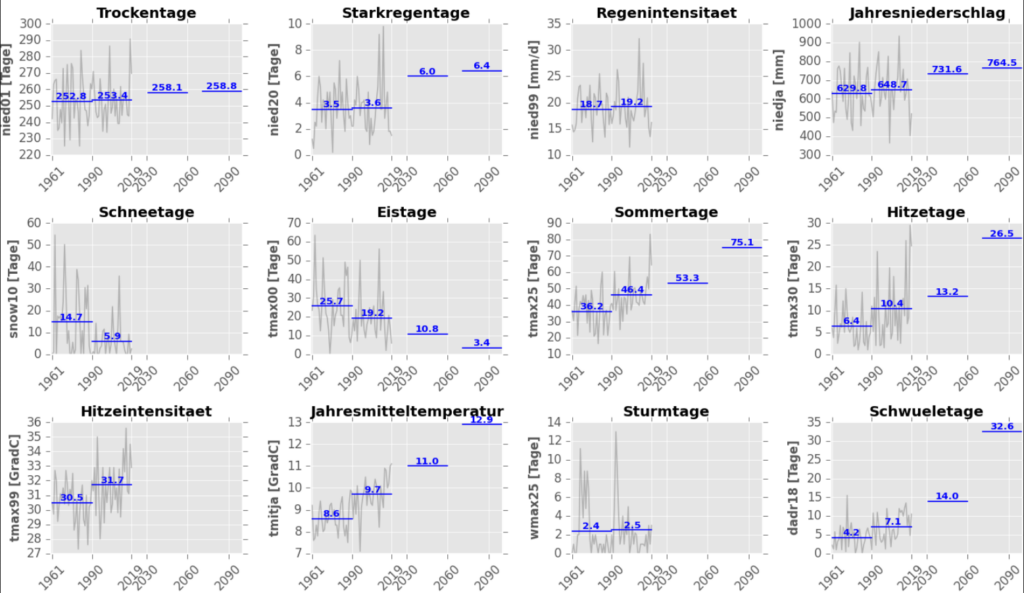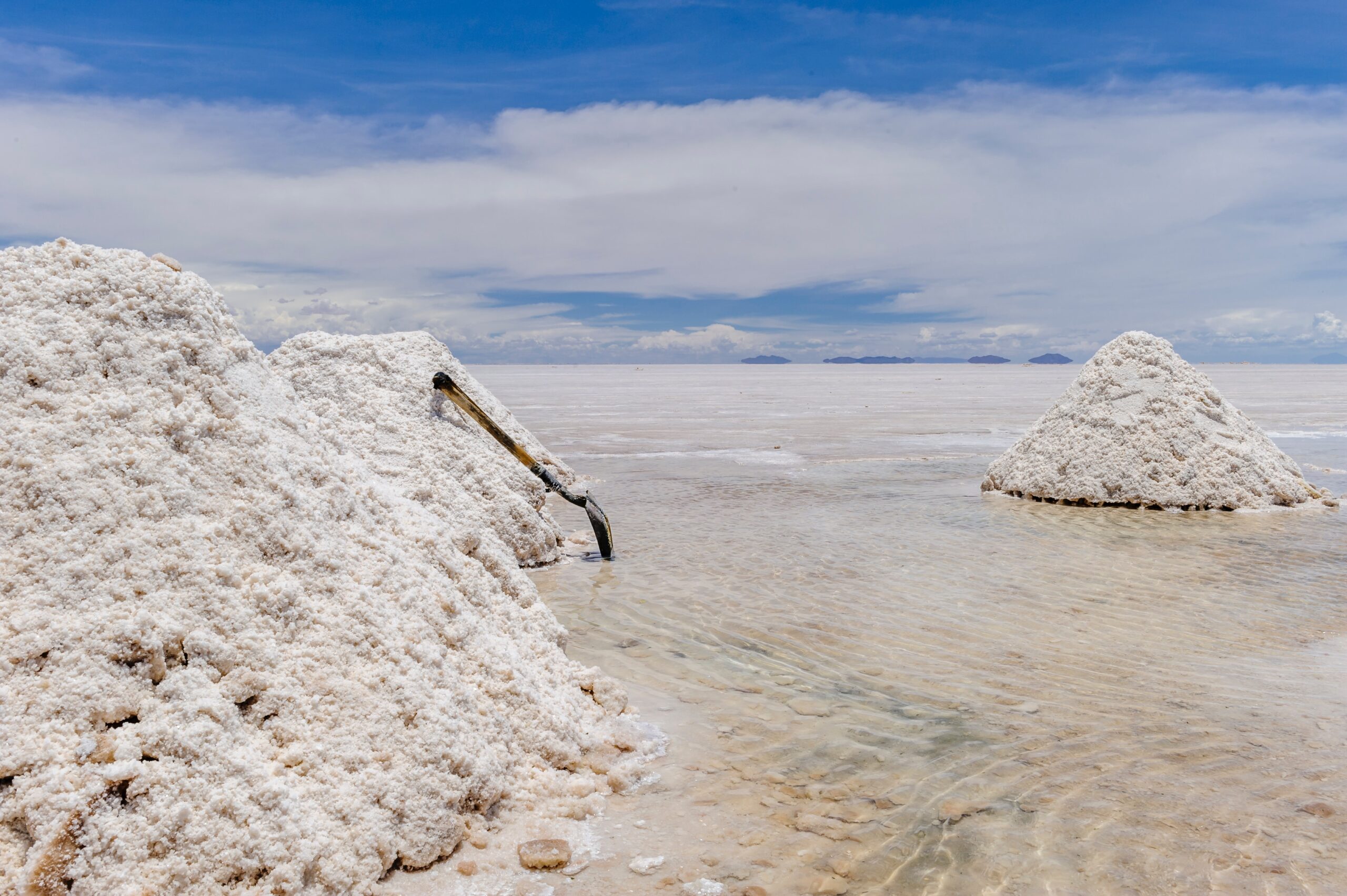Tourism contributes to climate change and is threatened by it at the same time. The risks for the sector are significant. But there are also opportunities. It is important to recognise at an early stage how the climate is changing in the region. What can destinations and tourism companies do to adapt to climate change? The article also helps to understand how climate adaptation and climate protection are linked.
Contents:
- How is the climate changing?
- What does climate change mean for tourism?
- Recognising risks and potential: What is needed for climate adaptation?
- 8 Measures for resilience to climate change
Tourism regions affected by climate change
Global climate change
The climate is changing worldwide, as weather data shows. The effects are being felt in many places, starting with the loss of glaciers and ice in the Arctic, accompanied by rising sea levels. This leads to a loss of beaches and threatens island states and coastal towns in particular. According to UNESCO calculations, a rise of 2 degrees Celsius would threaten more than 15% of all World Heritage sites due to the accompanying sea level rise. The scenario is even more drastic if all the ice melts. Simulations of this have been compiled by National Geographic (National Geographic, 2013) The resulting refugee movements can lead to the loss of tradition. In addition to culture, biodiversity is also under threat. The animal population has shrunk by more than 2/3 in the last 50 years, according to the WWF Living Planet Report 2020. (Editor's note: climate change is just one reason). This affects regions around the world that are losing tourism potential.
How is the climate changing in German tourism regions?
Climate change is also evident in Germany. Climate indicators such as mean annual temperature, heat intensity and extreme weather days show a clear picture. In Germany, for example, the average annual temperature is forecast to rise by around 4 degrees by 2100 and the number of hot days (> 30°C) is expected to quadruple compared to 1961-1990. In some destinations, the number of hot days has already quadrupled between 1961-1990 and 1990-2019, e.g. at Lake Constance or in the Allgäu. In the Zugspitze region, snow days have decreased by 13 % in the same period. At the Baltic Sea, the Mecklenburg Lake District and cities such as Dresden, the temperature has risen by more than 1 degree Celsius between 1961-1990 and 1990-2019. These indicators are expected to worsen significantly by 2100. (Climate change at Lake Constance, in the Allgäu, in the Zugspitze region, in Dresden, Baltic Sea, Mecklenburg Lake District)

What does climate change mean for tourism?
Destinations in a changing climate
Why is it important for tourism providers to know about climate change? Tourism is particularly sensitive to changes in weather and climate. If there is no snow, the ski season is cancelled. Let's not look as far as the Alps or the Ore Mountains (Study "Snow reliability in Saxon ski resorts is decreasing", 2020), but to Dresden, we recognise changes here too: The floods of 2002 and 2013 brought tourism to a complete standstill. In contrast, during the dry summers of 2018 and 2019, steamboat transport on the Elbe was unable to maintain its services due to the low water levels. In the Spreewald, on the other hand, water quality and water levels are declining to such an alarming extent that numerous waterways and canals are still impassable today. (Series "Savanne Oberlausitz" Sächsische Zeitung, 2020) In Saxon Switzerland, the quality of the paths was severely affected due to the clearing work with large machines as a result of the bark beetle impact.
Consequences of climate change for tourism
The climate therefore influences tourism in terms of the length and quality of a season, water quality and water levels in bodies of water, biodiversity, natural hazards, pollen and pathogens, weather- and climate-dependent tourism activities and the costs of operating and maintaining tourism infrastructure.
This also shows that climate change can lead to a loss of tourism services. Tourism is perhaps more dependent on a functioning ecological and social environment than any other industry. The vulnerability to environmental damage, the consequences of climate change, safety problems and health risks is particularly high. We can see the latter in the current example. Tourism must therefore adapt to climate change.
[glossary_exclude]Methods and best practice for sustainability in your mailbox

What is needed for climate adaptation?
Shaping the climate adaptation process
Climate adaptation identifies the risks and can thus minimise damage. In the best case scenario, tourism companies and destinations can even utilise expected changes to their advantage. The aim should be proactive and long-term planning at a strategic level, which is integrated into the overall strategy, e.g. of a destination. This implies that a climate adaptation concept should not be detached from existing processes and stakeholders, but should be developed in an integrative participation process and anchored in an overall strategy. The first step in the process is to identify the potential and risks of climate change and to sensitise stakeholders to the issue. This enables joint strategy work at eye level in the next step. It is then important to implement the strategy. The measures defined in it should be implemented jointly. The results should then be evaluated and improvement measures developed on this basis, e.g. through sustainable innovations and new ambitious goals.
1. potential and risk analysis
2. sensitisation of the players
3. strategy and action planning
Guidelines for adapting to climate change
4. implementation of measures
5. measurement, evaluation and improvement
Recognising the risks and potential of climate change - questions for destinations and service providers
Tourism companies and destinations can identify their opportunities and risks using the following questions, for example:
- What consequences of climate change can be expected locally?
- How does this affect demand?
- How high is the climate risk for competitors or competitor regions?
- What untapped potential does the region have?
- Which target groups should be addressed for this potential?
Where can you obtain information on climate change in your tourist region?
The basis of a risk and potential analysis is a look at the history and forecasts of climate change in travel destinations. There are excellent tools for this. These provide information on the indicators. We recommend the climate information system (this way), which is based on measurement data from the German Weather Service. It shows the average climatic changes over time in all tourism regions in Germany. It provides an overview of past climate changes as well as predictions of future developments. Another valuable tool is the ReKIS (this way). This regional climate information system is specially tailored to the requirements of Saxony, Saxony-Anhalt and Thuringia.

Risks for the destination if nothing is done
If we take the example of ski resorts, it quickly becomes clear what non-adaptation means. Winter tourists expect ski slopes in top condition and a wintry landscape with snow-covered mountains. If the destination does not live up to this expectation, travellers will change destinations - and will do so. If they don't like it in A today, they will travel to B tomorrow. The result is a lack of guests and even economic and social damage to the entire destination, including the service providers. Ecological consequences can also be enormous, e.g. through loss of biodiversity or additional emissions as a result of snowmaking, which further fuel climate change. There are also additional financial costs due to attempts to restore normal or original conditions, as well as exploding insurance costs.
8 Measures on climate change in tourism
Climate adaptation measures
Solutions for climate adaptation can take different forms. This depends entirely on the anticipated climate change in the respective tourism region. Falling water levels require different adaptation measures than increasing extreme weather conditions. If, for example, the average annual temperature rises in a hiking region, there will be potential, such as the utilisation of the low season. Hotels can take this into account in their marketing, create appropriate offers and thus work towards stable occupancy throughout the year. This can have a positive effect on internal staff management and external visitor management. If more frequent extreme weather conditions are to be expected, it makes sense for service providers to train their employees on how to behave in crisis situations. As a municipality or destination management organisation (DMO), emergency plans can reduce damage and risks. It is important to have a holistic view of the situation in order to avoid forcing conflicts of measures. The following approaches to strategic climate adaptation can serve as examples in the event of the following climate changes:
Rising average annual temperature
Expand utilisation of the low season
Promoting and marketing outdoor activities
Increasing extreme weather conditions
Expanding flood protection and floodplains
Develop crisis and emergency plans
Falling water levels and quality
Intensify water retention and water conservation
Strengthen renaturalisation and self-purification
Decreasing snow days
Putting together new offers and addressing new target groups
Promoting dynamic nature conservation
Climate adaptation and climate protection must go hand in hand
Solutions that are effective in the short term but harmful in the long term, such as artificial snowmaking, should be carefully considered. These can further exacerbate climate change. They can even damage the destination in the long term and require even more intensive adaptation measures. They should therefore not be considered as a solution. Long-term adaptation, on the other hand, includes climate protection targets. Climate protection is an important instrument for ultimately protecting the ecological and social environment on which tourism is so heavily dependent. To this end, tourism companies and destinations can combine climate protection and climate adaptation. Read our blog articles to find out how climate protection can be implemented in tourism Climate protection in tourism: 4 strategies that help along the way and Implementing climate protection in tourism: 40 valuable measures.
[glossary_exclude]
Are you planning the next steps towards sustainability?
Ask me for a free information meeting.
I am ready with advice and pleasure.
Franziska Kramer
Sustainability strategy and reporting topics

We work with companies on sustainability.
Strategy, controlling and corporate culture for sustainability.
For complex topics such as this, we provide advice, act as a sparring partner or provide impetus. If you would like to find out more about this topic or even tackle it yourself, please write to us:

2 comments
Comments are closed.